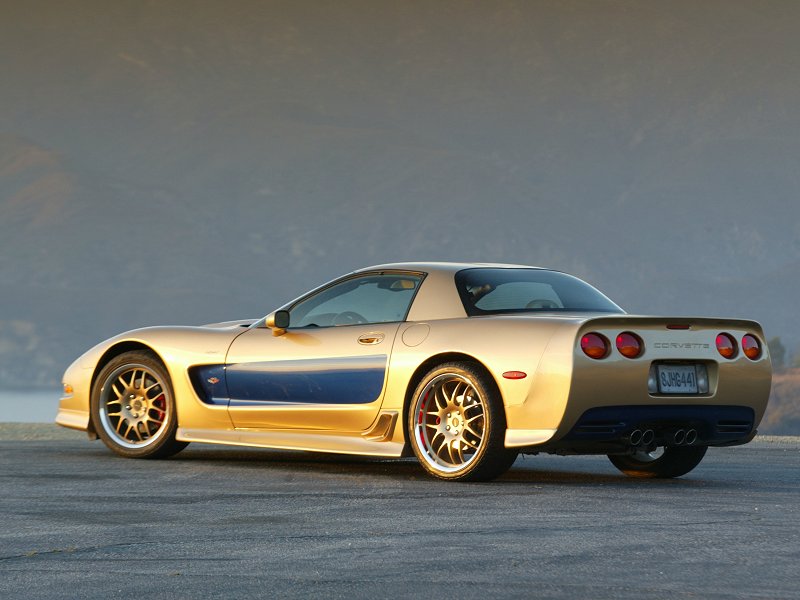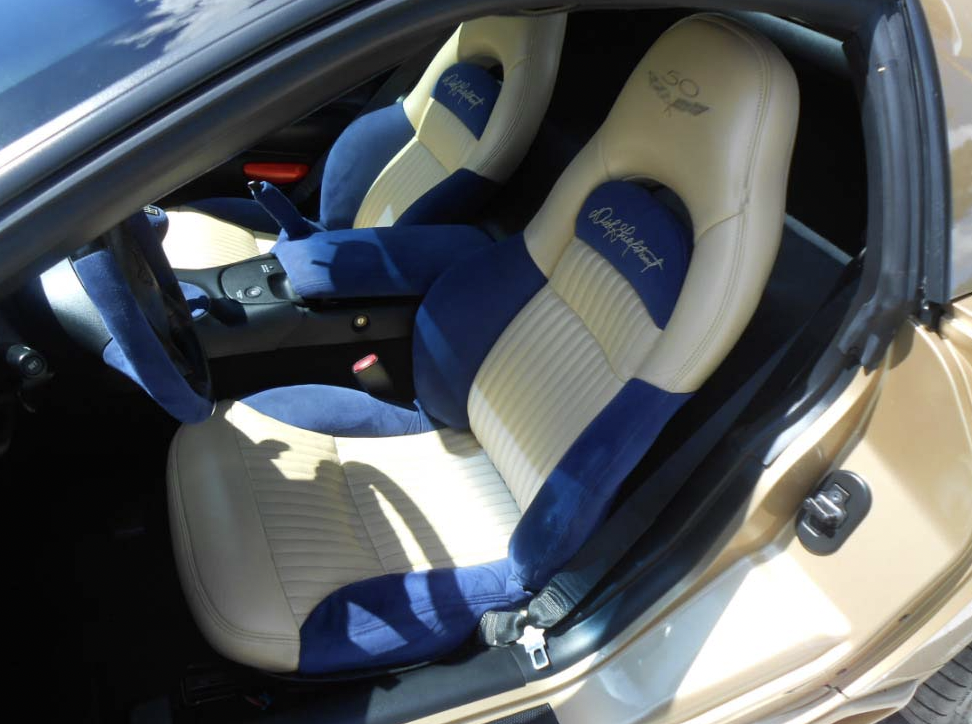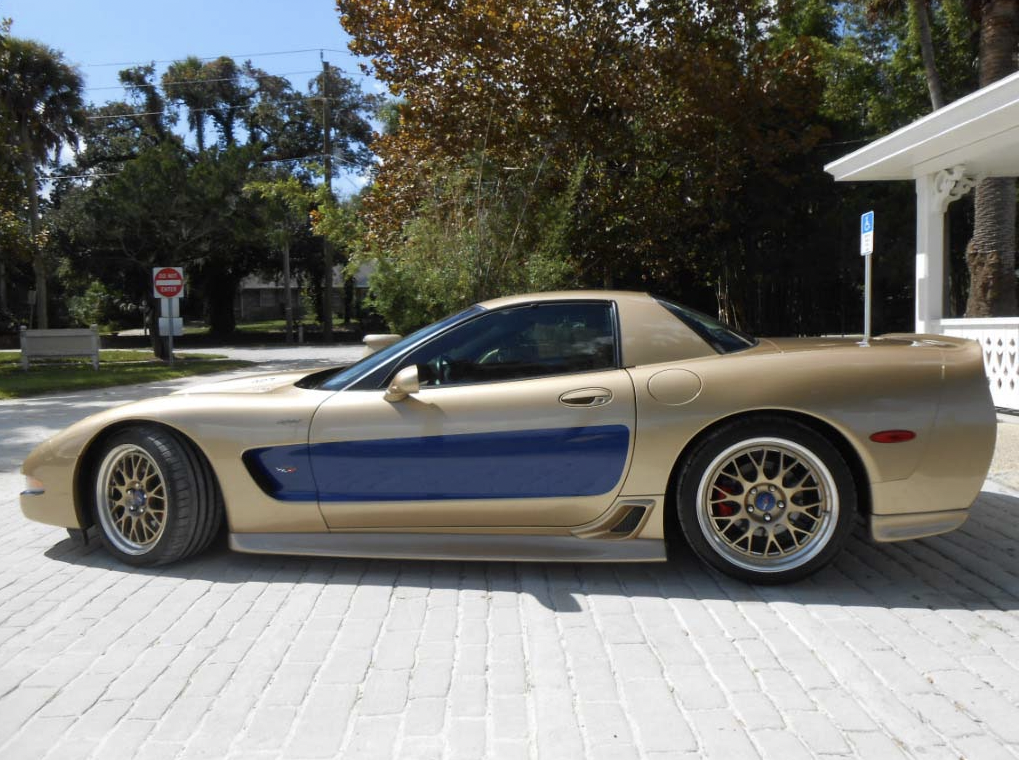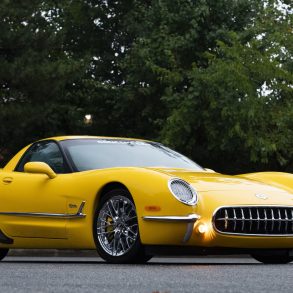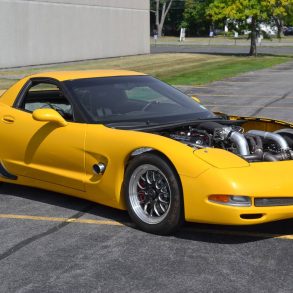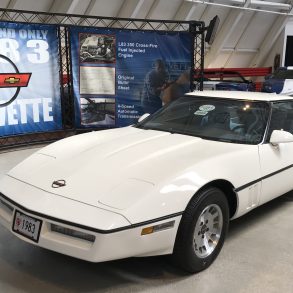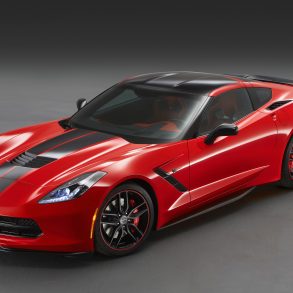Dick Guldstrand Signature Edition 50th Anniversary 427 Corvette
Having the magic numerals 427 on the hood of a Corvette is a big deal these days, now that we know the Corvette small-block V-8 will grow no larger than 366 cubic inches (6.0 liters) when the C6 Vette breaks cover. CAFE standards, emissions regulations, and the fact that contemporary Corvettes already have enough performance to land you in jail by the end of the block are all powerful corporate reasons to limit the Vette’s engine displacement.
That leaves the aftermarket free to exploit the historical significance of the 427 nomenclature. Lingenfelter Performance Engineering recently produced a car with an aluminum small-block-based V-8 dubbed “427” under its hood ( C/D, July 2001), and now Hall of Fame Corvette racer and tuner Dick Guldstrand has joined the fray with his version of a 427.
Bearing a name that uses about as many letters as the car has cubes, the Guldstrand Signature Edition 50th-Anniversary Corvette will cost eager collectors a whopping $49,330 on top of the price of the Z06 hardtop that is the basis of Guldstrand’s conversion.
That hefty surcharge boots the bottom-line price over the 100-grand goal post and is likely to prompt the question, Is it justified? Well, the cash buys one of only 50 vehicles powered by a small-block V-8 bored to 4.1 inches and stroked to 4.0 inches by Katech, providing—according to this finger-counting math genius—422 cubic inches of displacement.
Apparently, it’s not that easy to convert small-blocks to exactly 427 cubic inches. John Lingenfelter’s engine is really a 428, so let’s not quibble. Besides, it’s enough displacement in either case to produce a raucous herd of horses.
Guldstrand claims 500 horsepower at 5700 rpm and 520 pound-feet of torque at 4700 rpm. Since Katech was responsible for building the engines used in the Le Mans class-winning C5-R racers as well as in the 2001 American Le Mans Corvettes, we won’t argue with that.
Those power numbers are about the same as those of Lingenfelter’s car, and that makes sense, given the overall conceptual similarities. But we soon discovered that the Guldstrand’s performance results don’t exactly match those of Big John’s car. Granted, we were testing in the high desert after some heavy rains and the track surface was anything but grippy.
So launching the big Vette was a real problem. The usual trick of bogging it off the line and then adding power did not hook up the car terribly well. As the revs rose in first gear, the rear wheels would break loose and spin—even at less than full throttle.
Those problems resulted in a 0-to-60-mph time of 4.2 seconds. That’s disappointing in light of 4.0-second runs we’ve managed in a stock Z06 Corvette (not to mention a 3.4-second result in the Lingenfelter car). But you can’t blame poor traction for everything, and a close comparison of the test results poses other questions. If our 0-to-60 time was hampered by a tricky launch and was almost a second behind the Lingenfelter’s, how does that explain that the Guldstrand is 1.4 seconds behind at 100 mph? And why, by 130 mph, is it lagging by 2.3 seconds? Sounds to us as if the Guldstrand has a power deficit.
We know the runs were performed carefully, with upshifts executed so fast that clutch reengagement was under way even as the shift lever pushed the big gearwheels into final mesh. That is simply as fast as the transmission will shift.
Obviously, the Guldstrand car isn’t as fast as the Lingenfelter car—not all that surprising given Big John’s drag-racing experience. Besides, Guldstrand’s priorities lie more in the direction of an all-around fun car that is comfortable and streetable. The rich premium paid for this car is as much for its exclusivity and the various cosmetic additions as it is the extra displacement. (Our Lingenfelter test car had a base price of $71,778, but that was without extensive exterior and interior makeovers.) Included in the Guldstrand Signature Edition are two-tone Anniversary Gold and Cobalt Blue paint, a replacement power-dome hood, aero side sill extensions, a rear fascia with a lip spoiler, and European amber taillights. The Guldstrand car also features a special interior created by former Corvette designer John Schinella and executed by Lear VisionWorks.



